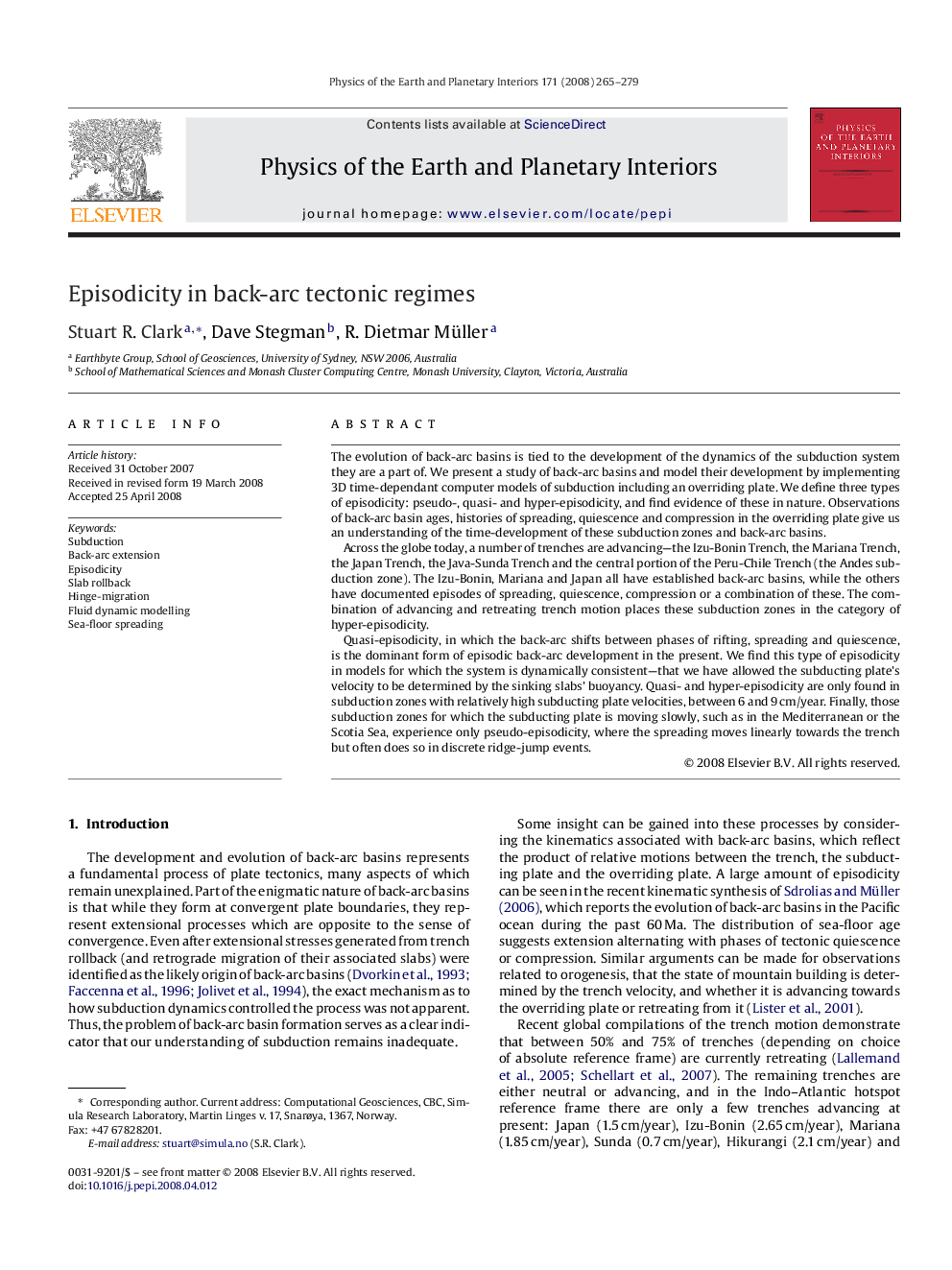| Article ID | Journal | Published Year | Pages | File Type |
|---|---|---|---|---|
| 4742322 | Physics of the Earth and Planetary Interiors | 2008 | 15 Pages |
The evolution of back-arc basins is tied to the development of the dynamics of the subduction system they are a part of. We present a study of back-arc basins and model their development by implementing 3D time-dependant computer models of subduction including an overriding plate. We define three types of episodicity: pseudo-, quasi- and hyper-episodicity, and find evidence of these in nature. Observations of back-arc basin ages, histories of spreading, quiescence and compression in the overriding plate give us an understanding of the time-development of these subduction zones and back-arc basins.Across the globe today, a number of trenches are advancing—the Izu-Bonin Trench, the Mariana Trench, the Japan Trench, the Java-Sunda Trench and the central portion of the Peru-Chile Trench (the Andes subduction zone). The Izu-Bonin, Mariana and Japan all have established back-arc basins, while the others have documented episodes of spreading, quiescence, compression or a combination of these. The combination of advancing and retreating trench motion places these subduction zones in the category of hyper-episodicity.Quasi-episodicity, in which the back-arc shifts between phases of rifting, spreading and quiescence, is the dominant form of episodic back-arc development in the present. We find this type of episodicity in models for which the system is dynamically consistent—that we have allowed the subducting plate's velocity to be determined by the sinking slabs’ buoyancy. Quasi- and hyper-episodicity are only found in subduction zones with relatively high subducting plate velocities, between 6 and 9 cm/year. Finally, those subduction zones for which the subducting plate is moving slowly, such as in the Mediterranean or the Scotia Sea, experience only pseudo-episodicity, where the spreading moves linearly towards the trench but often does so in discrete ridge-jump events.
